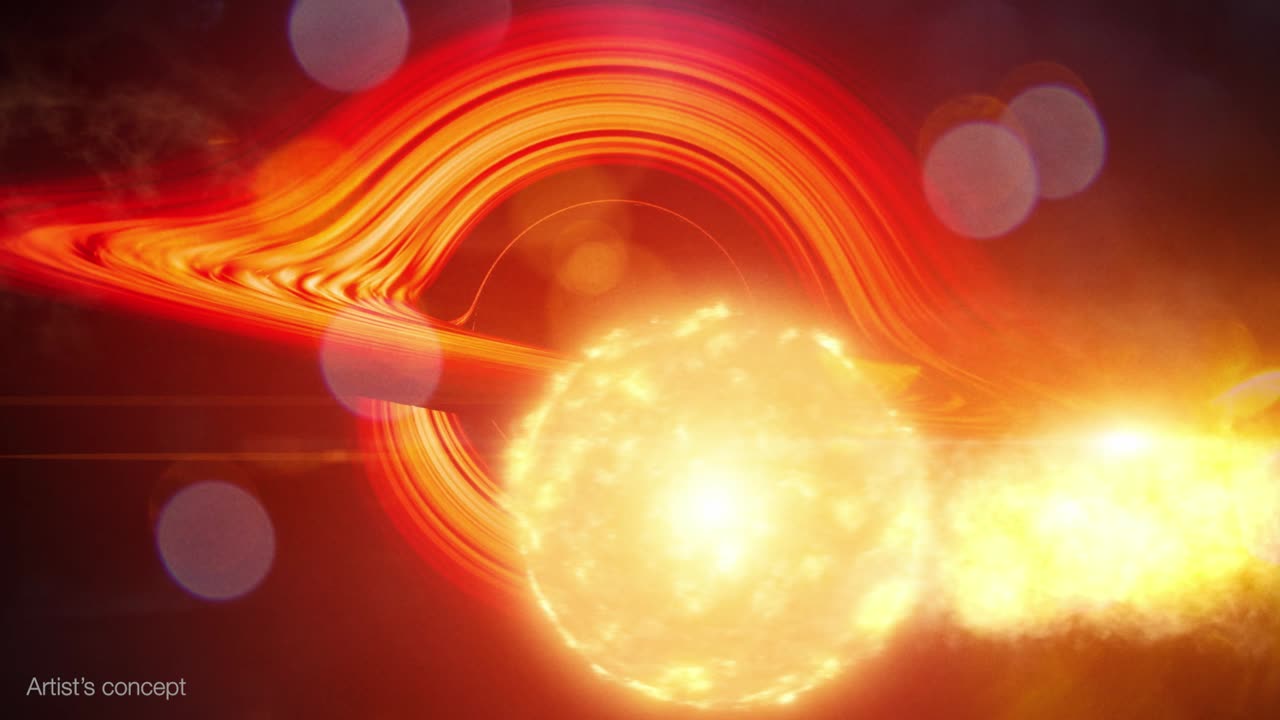Premium Only Content

Swift Utilizes Innovative Technique to Detect a Feeding Black Hole
Watch to learn how an update to NASA’s Neil Gehrels Swift Observatory allowed it to catch a supersized black hole in a distant galaxy munching repeatedly on a circling star.
Using NASA’s Neil Gehrels Swift Observatory, which launched in 2004, scientists have discovered a black hole in a distant galaxy repeatedly nibbling on a Sun-like star. The object heralds a new era of Swift science made possible by a novel method for analyzing data from the satellite’s X-ray Telescope (XRT).
When a star strays too close to a monster black hole, gravitational forces create intense tides that break the star apart into a stream of gas. The leading edge swings around the black hole, and the trailing edge escapes the system. These destructive episodes are called tidal disruption events. Astronomers see them as flares of multiwavelength light created when the debris collides with a disk of material already orbiting the black hole.
Recently, astronomers have been investigating variations on this phenomena, which they call partial or repeating tidal disruptions.
During these events, every time an orbiting star passes close to a black hole, the star bulges outward and sheds material, but survives. The process repeats until the star looses too much gas and finally breaks apart. The characteristics of the individual star and black hole system determine what kind of emission scientists observe, creating a wide array of behaviors to categorize.
On June 22, 2022, the XRT captured Swift J0230 for the first time. It lit up in a galaxy around 500 million light-years away in the northern constellation Triangulum. Swift’s XRT has observed nine additional outbursts from the same location roughly every few weeks.
Scientists propose that Swift J0230 is a repeating tidal disruption of a Sun-like star orbiting a black hole with over 200,000 times the Sun’s mass. They estimate the star loses around three Earth masses of material on each pass. This system provides a bridge between other types of suspected repeating disruptions and allowed scientists to model how interactions between different star types and black hole sizes affect what we observe.
Swift J0230’s discovery was possible thanks to a new, automated search of XRT observations called the Swift X-ray Transient Detector.
Credit: NASA’s Goddard Space Flight Center
-
 26:39
26:39
Producer Michael
18 hours agoMY $32,000 EMIRATES FIRST CLASS FLIGHT!
18.8K3 -
 48:21
48:21
The Confessionals
19 hours agoPossessed by the Gods? The Truth About Avatars w/ Jonathan Cahn
2.39K4 -
 36:34
36:34
The Finance Hub
16 hours ago $1.29 earnedBREAKING: BILL CLINTON'S EPSTEIN TIES JUST GOT RELEASED!!!
4.05K6 -
 LIVE
LIVE
BEK TV
22 hours agoTrent Loos in the Morning - 9/10/2025
243 watching -
 LIVE
LIVE
The Bubba Army
21 hours agoFeds STEP IN on Charlotte Stabbing Case - Bubba the Love Sponge® Show | 9/10/25
3,472 watching -
 LIVE
LIVE
FyrBorne
10 hours ago🔴Warzone M&K Sniping: An Old Meta Returns To Cut Down The Competition
58 watching -
 25:54
25:54
ZeeeMedia
13 hours agoThe Shadow Government, Mask Plague, Nepal Uprising Topples Government | Daily Pulse Ep 104
13K23 -
 LIVE
LIVE
Biscotti-B23
6 hours ago $0.06 earned🔴 LIVE DRAGON BALL GEKISHIN SQUADRA IS HERE 🐉 RANKED MATCHES & BATTLE PASS SHOWCASE
47 watching -
 27:40
27:40
TheRoyaltyAutoService
15 hours ago $1.30 earnedHow To Replace A Battery Like A Professional!
24K1 -
 5:15:03
5:15:03
B2ZGaming
6 hours agoTwo For Tuesday!!! | B2Z Gaming
3.32K